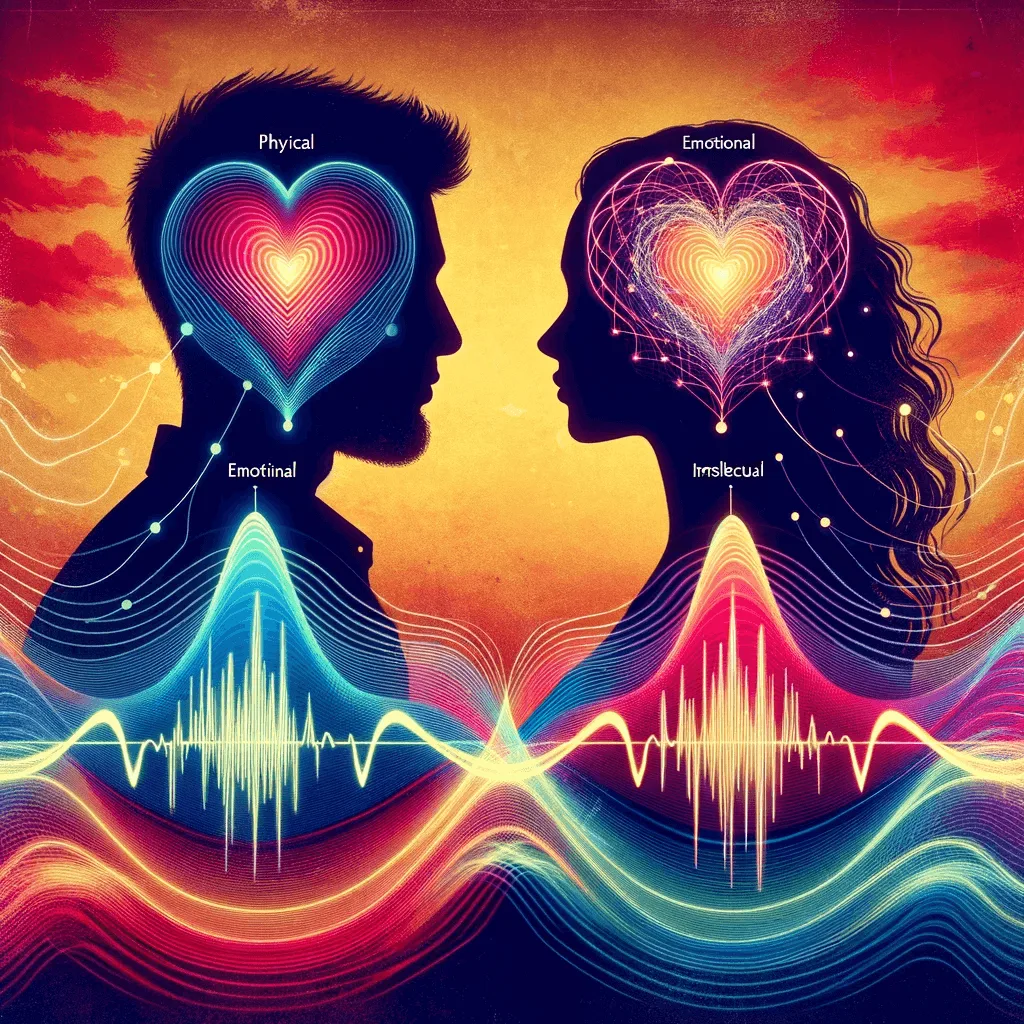
Synchronising Souls: Biorhythms Compatibility
In the intricate world of biorhythms, a fascinating aspect has emerged: biorhythms compatibility. It suggests that our inherent cycles can resonate, clash, or dance harmoniously with those of another. But what does this mean, and how does it influence our relationships? Let's delve into the rhythmic dance of compatibility.
article by Adrian Wallace
Biorhythms 101: A Quick Refresher
At its core, biorhythms posit that from the moment of birth, we move through three primary cycles:
- Physical Cycle (23 days): Governing vitality, energy, and physical well-being.
- Emotional Cycle (28 days): Influencing moods, feelings, and emotional responses.
- Intellectual Cycle (33 days): Steering cognition, alertness, and analytical capabilities.
Compatibility Explored: Beyond Astrological Signs
Much like zodiac compatibility, biorhythms compatibility seeks to understand how two individuals' cycles align or differ. It's a measure of how one person's highs, lows, and transitional phases might synchronize with another's, influencing the dynamics of their interaction.

Calculating Compatibility: The Rhythmic Blueprint
To determine biorhythmic compatibility:
- Chart both individuals' biorhythmic cycles based on their birth dates.
- Observe the alignment of cycles: Are they both experiencing a peak, trough, or transitional phase at the same time in any of the cycles?
- Calculate the percentage of alignment in each cycle to get a compatibility score.
Interpreting the Scores: What The Numbers Say
- High Compatibility (80% and above): Indicates synchronized rhythms, suggesting harmony, understanding, and ease in the relationship.
- Moderate Compatibility (50% - 79%): Suggests a mix of synchronized and out-of-sync phases, requiring understanding and compromise.
- Low Compatibility (below 50%): Indicates contrasting rhythms, which might lead to potential challenges or the need for increased mutual effort.

Beyond Numbers: The Real-life Implications
While the compatibility scores offer insights, real-life relationships are influenced by myriad factors. A high biorhythmic compatibility might mean natural ease in physical activities or emotional understanding, but values, communication, and other factors also play crucial roles.
Enhancing Relationships: Using Biorhythmic Insights
Understanding biorhythmic compatibility can serve as a tool to enhance relationships:
- Foreseeing potential friction days and practicing patience.
- Planning activities that align with both individuals' peaks.
- Using out-of-sync phases as opportunities to learn, grow, and understand each other better.

Critics' Corner: Is It All Just Numbers?
As with many predictive sciences, biorhythms and their compatibility metrics face skepticism. Critics argue that relationships are too complex to be reduced to rhythmic cycles. While there's validity to this perspective, many find biorhythmic insights beneficial as supplementary tools in understanding relational dynamics.
Biorhythms compatibility offers a unique lens to view relationships, highlighting the ebb and flow of interconnected rhythms. Whether you're a firm believer or a curious skeptic, one thing is clear: understanding our rhythms and those of our loved ones can only enrich the tapestry of our shared experiences.
Published: 11/3/2023
Modified: 11/3/2023
More predictions
Come back here soon to learn more about yourself and your future





